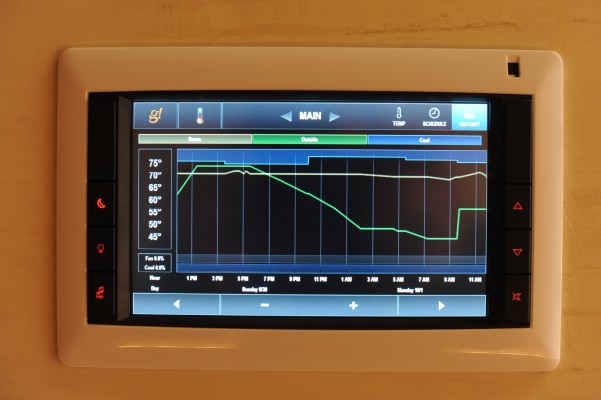Increasingly, I’m more interested in what architecture does than just what it is. In a previous blog, I wrote about the new office building we designed for Wiss, Janney, Elstner Associates (WJE), in Austin, and the use of thermal mass to control temperature. We’ve now employed those same sustainable principles for a residence in northern New Mexico. The rammed-earth structure, located outside Santa Fe, virtually disappears into its site and surroundings. For the earthen walls, we selected four shades of the indigenous sedimentary dirt to create a deep, luscious palette, and it’s used for both exterior and interior surfaces. In fact, these are much the same colors and hues Georgia O’Keefe found in the same landscape and can often be seen in her paintings. I’m thrilled with how it all turned out, as are the homeowners. The house is invisible from the street and even when approached close up, one must proceed through vegetation and down a broad stair into a courtyard. Only then can one see the entire house.
How all these elements – location, materials, building placement, wall density – work together is the real story here. At 6,200 feet, the local climate is high, arid desert with very warm summertime temperatures and a sharply colder winter. By siting the building to face south, we gained excellent winter solar exposure. Large, ipe wood overhangs and a trellis act as a brise soleil, while the dense walls soak up the daily solar gain and radiate it back at night. The huge, sliding, high-performance glass door openings permit a comfortable, steady cross-ventilation fed by the mountain chaparrals. With the deep sunshades, the house is pretty much clear of the sun’s arc in the summer sky, and yet takes full advantage of the direct light in the cooler months. The result is that both air conditioning and heating requirements are greatly reduced, although systems for each are carefully integrated into the structure and are there as a back up. Sophisticated sensors in the house monitor temperature swings (which, so far, are virtually non-existent). In short, we’ve built a beautiful, self-regulating performance envelope with essentially just dirt.
Inside, the concrete floors (with embedded radiant heat) were made using local gravel cast into the final mix, and then diamond-finished as one would with terrazzo. As with the walls, the floors have a solid, rich visual quality and their colors are seen not only inside the house but also out in the broader landscape.
In designing the thermal performance of the house we used largely empirical methods. We looked at what had been done elsewhere, how it had been done, and what worked. This method has been used for centuries, long before computers and high-tech calculations. One can see countless similar examples among ancient architecture in Turkey, India, Egypt, and China. We did, of course, consult an engineer for the radiant heat.
Given the excellent monitoring devices built into the house, we will be able to tell how well this house works over various seasons. I am really interested in and committed to the ultimate outcome that we need to measure for a substantial period of time. Might be good for a follow-up blog in the future. I’ll keep you posted.

Incredible! What an amazing combination of elegant & natural design and common sense sustainability.
[…] While researching and surging treehugger.com, i came across a really talented architect, Larry Speck […]
[…] with essentially just dirt.” See more pictures and information at his web site by following this link. […]
[…] © Larry Speck […]
I wonder how long the temp will remain at or near 70, esp. in the Winter ? What a beautiful appearance the walls have.